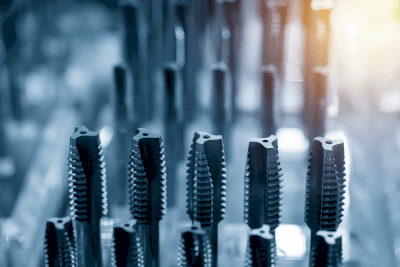What Is a Point Tap?

A point tap, also known as a gun tap, is a specialized threading tool designed for threading through holes. It features a twisted and sharp tip.
Due to its twisted and sharp tip, point taps produce chips in a forward direction, preventing chip blockage in the hole. This makes it ideal for trouble-free continuous machining on machines, ensuring stable tapping in mass production scenarios.
However, it is important to note that point taps are not suitable for tapping when a hole has a bottom.
Uses of Point Taps
Point taps find their primary use in machining, especially for large-volume through-holes and continuous machining of mass-produced items.
One of their key advantages is their lower cutting load compared to other taps, resulting in fewer issues like tap breakage and faster processing times. As a result, point taps are preferred in situations where increased productivity and maximum output within a limited timeframe are desired for mass-produced items.
Another benefit of point taps is their resistance to becoming dirty after processing, making it easy to clean both the jig and the final product.
Principles of Point Taps
Unlike hand taps and spiral taps, the tip of a point tap features grooves that direct chips along the blade’s direction. The tap’s design allows chips to slide down these grooves smoothly.
On the other hand, because the tip’s biting portion is cut deeper, point taps cannot reach the bottom of a hole with a hole bottom, and the chips tend to block the hole due to their forward discharge. This makes point taps unsuitable for machining stop holes.
In contrast, spiral taps have spiral-shaped blade grooves that discharge chips in the opposite direction of the tap, preventing chip interference during machining.
Point taps come in two material types: high-speed tool steel (HSS) and cemented carbide. HSS is known for its toughness and resistance to breaking, while cemented carbide is wear-resistant and maintains durability even after continuous machining. Material selection should match the processed material to ensure compatibility.